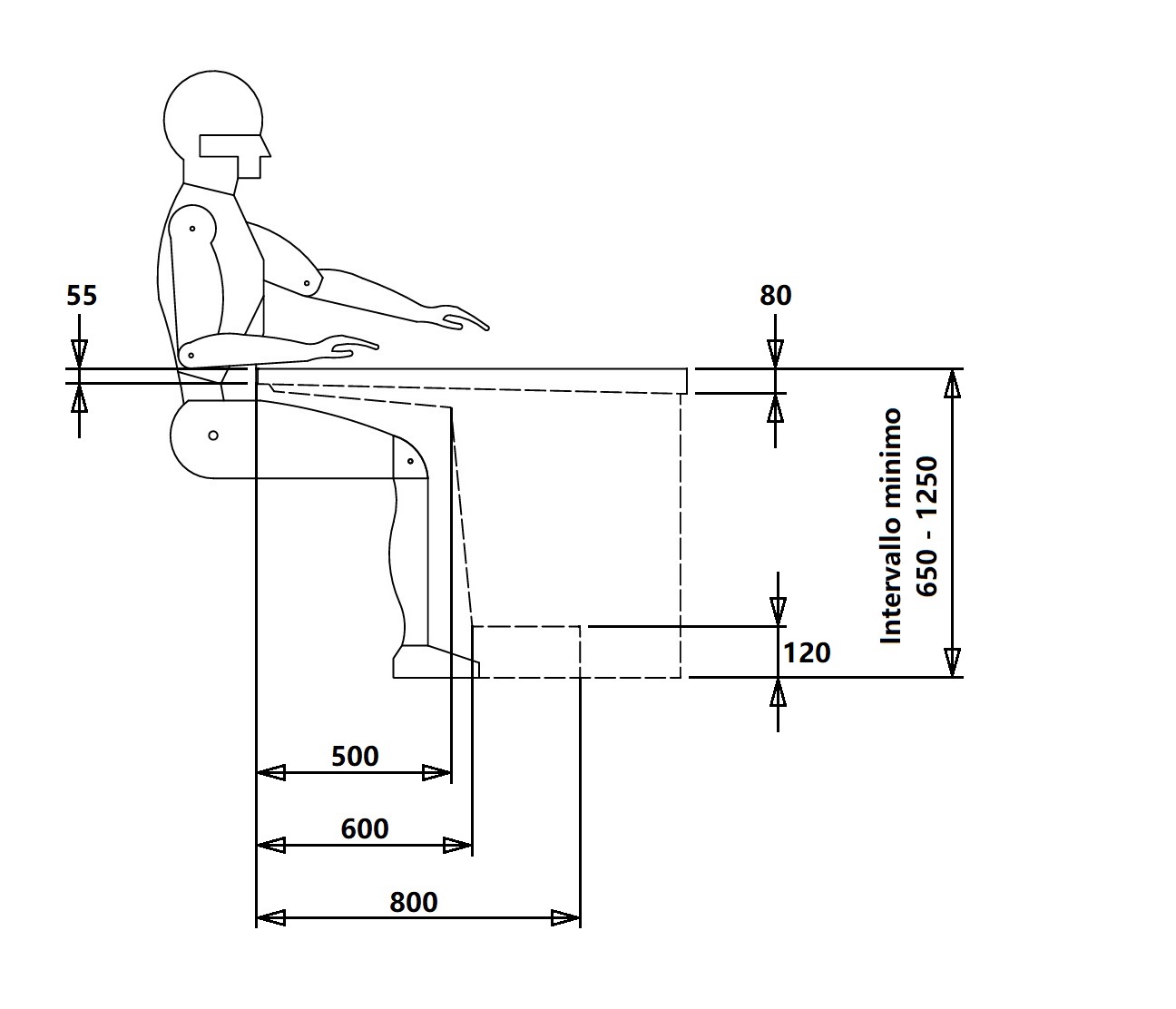

|
|
To maintain the correct posture, you need to have:
1) a desk designed according to the ergonomic requirements currently in force (UNI EN 527-1 and ISO 11064-4). As a general principle, an ergonomic desk must:
To learn about the characteristics of an ergonomic desk you can read the article dedicated to the Ergonomic design of control centers: dimensions of workstations.
2) an ergonomic chair according to ISO 9241-5 which must be robust and stable for 24/7 continuos work, with simple height adjustment functions that support the natural movement of the body.

To determine the height at which displays should be placed, the following factors must be considered:
UNI EN ISO 9241-5 determines the ergonomic requirements for the main monitor of a VDT considering the upright sitting position.
|
The line of vision in the sitting erect position (with the head relaxed) is inclined approximately 35° below the horizontal. In the standing position, the inclination of the line of vision is approximately 30°. The optimal position of the most important video unit is between ±15° in the vertical and horizontal directions from the line of vision. |
|
The viewing distance must be chosen taking into account:
Eye strain
The viewing angle (angle formed by the line of vision and the line perpendicular to the surface of the video at the point where the line of vision intersects the image on the surface of the video itself).
The task performed
Maximum viewing distance = 215 x height of latin characters
|
The ideal viewing distance for office work in a sitting position is 600 mm. However, some users may feel more comfortable with distances ranging between 450mm and 750mm. Viewing distances within this range require character heights of 20' to 22' (approximately 0.3°). |
|